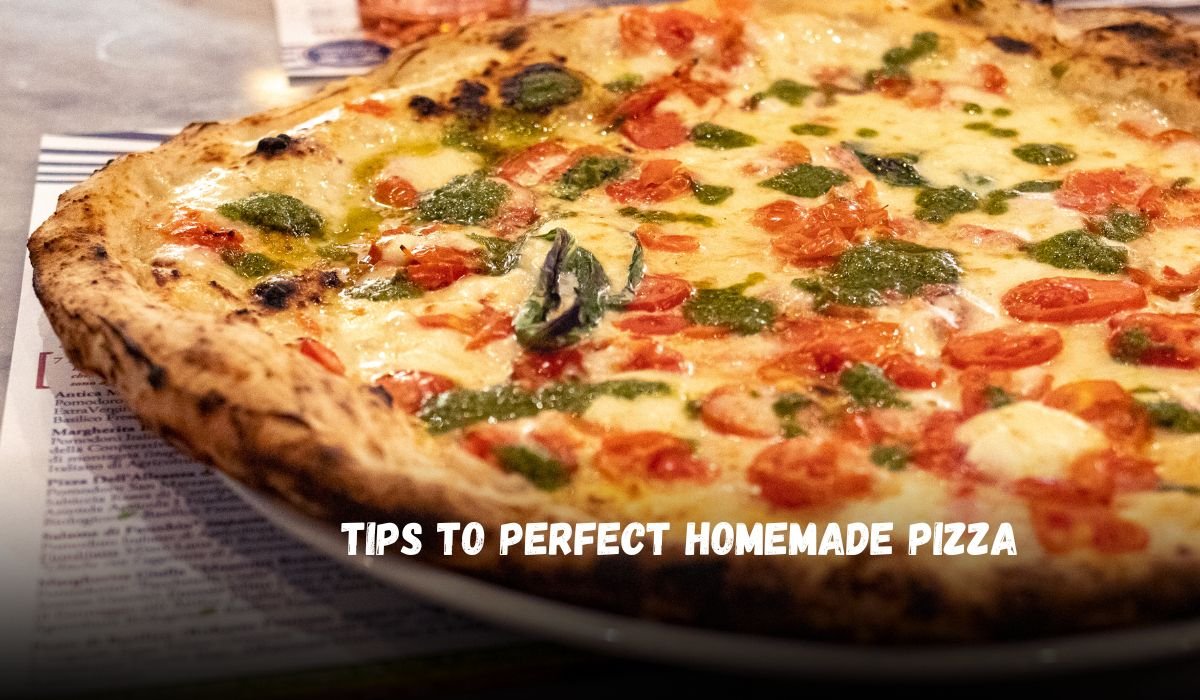Who doesn’t love a slice of hot, cheesy pizza? Making pizza at home is like painting a masterpiece—you get to choose the colors (or toppings) and create something that’s all your own. But let’s be honest, getting that perfect pizza can feel tricky. Maybe your crust is too soggy, or the cheese just won’t melt right. Don’t worry! I’ve got nine simple tips to help you whip up a homemade pizza that’s so good, your friends might think you ordered it from a fancy restaurant. Let’s dive in and make your pizza dreams come true!
Pick the Right Flour for Your Crust
Ever wonder why some pizza crusts are crispy and others are chewy? It’s all about the flour! For a classic pizza crust, go for bread flour. It has more protein, which gives your dough that stretchy, chewy texture we all love. If you want a super crispy crust, try “00” flour—it’s finer and works like magic for thin, Italian-style pizzas. Don’t just grab any flour from your pantry. Check the label, and you’ll be one step closer to a crust that’s the star of the show.
Knead Your Dough with Love
Kneading dough is like giving it a big hug—it makes it strong and stretchy. Spend about 10 minutes kneading your dough until it feels smooth and bounces back when you poke it. If you rush this step, your crust might end up flat or tough. Think of it as a workout for your dough. No gym membership needed—just a little elbow grease! If you have a stand mixer, let it do the heavy lifting, but don’t skip this step entirely.
Let Your Dough Rest
Patience is key when it comes to pizza dough. After kneading, let your dough rest for at least an hour, or even overnight in the fridge. This gives the gluten time to relax, making your dough easier to shape. Plus, it adds a deeper flavor, like letting a good soup simmer. Cover it with a damp cloth or plastic wrap to keep it from drying out. Trust me, this waiting game is worth it for a crust that’s light and airy.
Use a Pizza Stone or Steel
Want that crispy, restaurant-style crust? A pizza stone or steel is your secret weapon. These tools soak up heat and cook your pizza evenly, giving you a crust that’s golden and crunchy. Preheat your stone in the oven for at least 45 minutes at the highest temperature your oven can handle (usually 500°F or more). It’s like giving your pizza a cozy, hot bed to bake on. No stone? A heavy baking sheet works too, but a stone makes a big difference.
Don’t Overdo the Sauce
Sauce is the soul of your pizza, but too much can make your crust soggy. Spread a thin layer of sauce—about a quarter cup for a 12-inch pizza. Use a spoon or ladle to swirl it out from the center, leaving a little border for the crust. Think of it like painting a canvas: you want just enough color to shine without drowning the picture. Homemade tomato sauce is great, but a good store-bought one works in a pinch.
Choose Quality Cheese
Cheese is the gooey heart of any pizza, so don’t skimp here. Fresh mozzarella is a classic choice—it melts beautifully and adds a creamy texture. If you like a sharper flavor, mix in some cheddar or parmesan. Grate your own cheese if you can; pre-shredded stuff has additives that can mess with the melt. Imagine your cheese as the warm blanket that ties all the flavors together—make it a good one!
Go Easy on Toppings
It’s tempting to pile on every topping in your fridge, but less is more. Too many toppings can weigh down your pizza and make it soggy. Stick to three or four favorites, like pepperoni, mushrooms, or bell peppers. Chop them into small pieces so they cook evenly. Think of your pizza like a stage—every topping should have a chance to shine without crowding the spotlight.
Crank Up the Heat
Pizzerias use super-hot ovens, and you should too! Crank your oven to its highest setting, usually 500°F or more. High heat gives you that crispy crust and perfectly melted cheese. If your oven runs cool, consider a pizza oven if you’re really serious. It’s like turning your kitchen into a mini pizzeria. Just make sure to preheat for a long time to get that heat roaring.
Practice Your Shaping Skills
Shaping your dough is where the fun happens! Don’t worry about a perfect circle—rustic is charming. Press the dough out with your fingers, starting from the center, and stretch it gently. If it keeps shrinking back, let it rest for 10 minutes and try again. Think of it like coaxing a shy friend to open up—be gentle, and it’ll work out. A little flour or cornmeal on your surface keeps it from sticking.
Conclusion
Making the perfect homemade pizza is easier than you think. With the right flour, a little patience, and some hot oven magic, you can create a pizza that’s crispy, cheesy, and totally yours. It’s not just about the food—it’s about the fun of creating something from scratch and sharing it with people you love. So grab your ingredients, roll up your sleeves, and get ready to impress everyone with your pizza skills. What are you waiting for? Your next pizza night is going to be a hit!
FAQs
What’s the best flour for pizza dough?
Bread flour or “00” flour works best for a chewy, crispy crust.
How long should I knead my dough?
About 10 minutes, until it’s smooth and springy.
Can I use store-bought sauce?
Yes! Just spread it thin to avoid a soggy crust.
Do I need a pizza stone?
It’s not a must, but it helps make your crust crispy and evenly cooked.
How hot should my oven be?
As hot as it goes—usually 500°F or higher for the best results.















